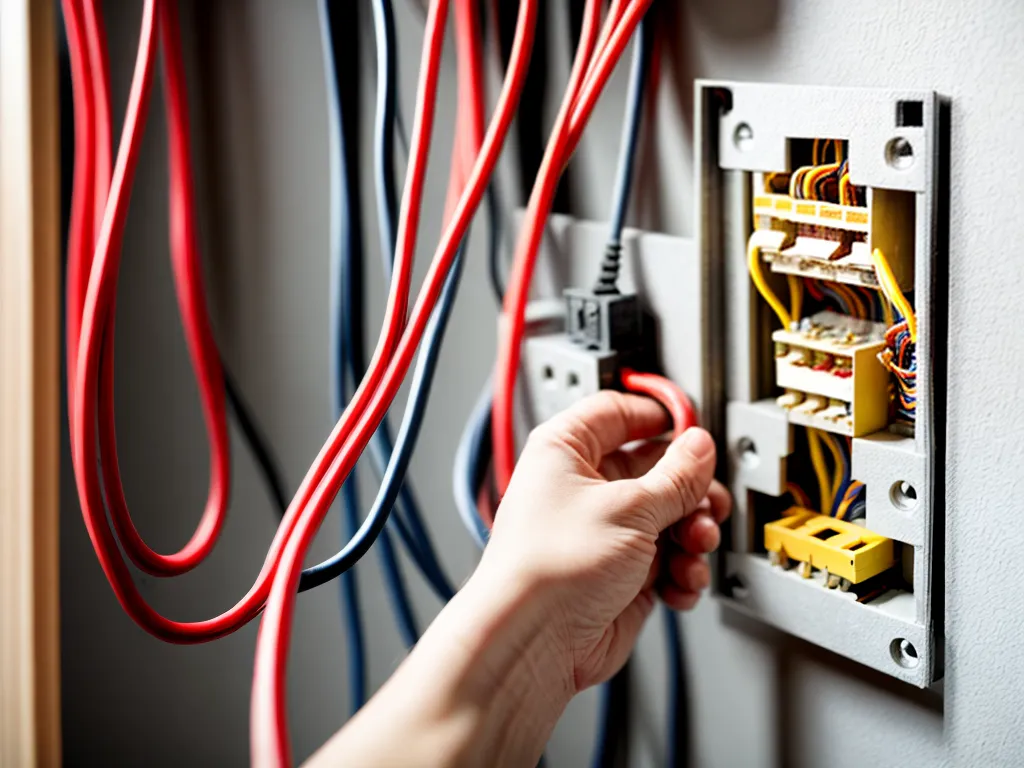
Installing exposed wiring in your home can allow you to highlight the inner workings of your electrical system. However, exposed wiring also comes with risks if not done properly. As a homeowner, you can safely install exposed wiring yourself by following key guidelines.
Research Local Building Codes
Before beginning any exposed wiring project, the first step is to research your local building codes. Most jurisdictions require permits and inspections for exposed wiring installations. Your local permitting office can provide copies of relevant codes and requirements.
Pay special attention to any regulations on:
- Wire type and rating
- Maximum run length without junction box
- Mounting and securing methods
- Allowed locations and clearances
- Junction box specs
Failing to follow local building codes could make your installation illegal or unsafe. Doing the legwork upfront ensures your exposed wires will meet all requirements.
Choose the Correct Wire
Selecting the proper gauge and type of wire is critical for both safety and function. Consider the following:
-
Wire gauge - Heavier gauges can handle higher amperages. Size your wires appropriately for the expected load.
-
Insulation rating - Exposed wiring requires weather and UV-resistant insulation. Use only wiring approved for exposed runs.
-
Metal type - Copper wire is the standard choice. Aluminum may also be used but requires special precautions.
-
Individual wires vs. cable - Cables streamline installation but limit flexibility. Individual THHN wires allow more options.
Consult an electrician if you are unsure what wire to use. Attempting to save money on wire can compromise safety.
Create a Sound Installation Plan
Map out your planned exposed wiring runs on paper before starting. Sketch wire routes between endpoints, noting:
-
Mounting locations - Mark where wires will be secured. Spacing must meet code.
-
Box locations - Show any needed junction or outlet boxes.
-
Wire length - Estimate total wire length, leaving extra.
-
Path obstacles - Note any potential roadblocks like beams.
-
Materials needed - Make a full list of wiring, boxes, clamps, and tools required.
A good installation plan helps avoid frustrations, extra trips to the store, and code violations.
Use Proper Mounting Hardware
Exposed wires must be firmly secured using approved mounting clamps. Plastic wire staples offer no structural integrity or insulation protection. Likewise, improvised wire ties using string or zip ties are unreliable and prohibited.
Use metal conduit clamps, straps, or hangers spaced according to local code. Secure clamps with appropriate screws into wood blocking or masonry anchors when mounting to walls or ceilings.
Do not allow wires to lay loosely or make direct contact with framing. Use standoff clamps when running over metal studs to prevent vibration noise. Good mounting prevents wires from working loose over time.
Maintain Proper Clearances
Local codes specify minimum clearances between exposed wires and other objects. This helps prevent contact or overheating.
Typical minimums are:
-
3 inches from other wiring - Keeps wires isolated and accessible.
-
12 inches from gas lines - Reduces arc or shorting risk.
-
2 inches from ceiling and framing - Allows space for clamps.
Also keep exposed wiring away from:
-
Water pipes - Prevents potential shock hazard if pipes leak.
-
Heat sources - Helps avoid insulation damage from excess heat.
Check your clearance requirements and maintain appropriate spacing.
Use Code-Compliant Boxes
Any splice, switch, receptacle, or end-point for your exposed wires requires an approved junction box properly mounted. Consider key standards:
-
Material - Use steel or plastic boxes rated for exposed use. Outdoor runs need weatherproof boxes.
-
Size - Ensure boxes meet your local code's required volume for number and size of wires entering. This provides working space.
-
Position - Mount boxes flat to surfaces or suspended, secured for their weight. Avoid unsupported boxes.
-
Clamps - Use romex style clamps adjusted snugly to entering cables to guard against pulls or strains.
Boxes give exposed cables necessary protection and support at connection points. Don't skip them.
Beware Shock and Short Hazards
Exposed wires pose increased risk of electric shock. With conductors visible, it becomes easier to accidentally make contact and get shocked. Take precautions:
-
Use GFCI outlets on exposed wire circuits for added protection.
-
Post warning signs identifying live exposed wiring.
-
Consider installing wire guards or conduit around extremely low or accessible runs.
-
Shut off power before doing any work near exposed cables.
Respect the hazard live electrical wires present. Work safely and consider safety upgrades.
Call for Inspections
Once your exposed wiring project is complete, contact your local building department to schedule a final inspection. An approved inspector will check for:
- Correct wire type and ratings
- Adequate wire gauge for run length
- Proper mounting and supports
- Sufficient wire terminations and connections
- Approved boxes and clamps
- Required clearances maintained
Passing inspection is mandatory for legal exposed wiring. Make any corrections needed until your installation passes.
With careful planning and attention to detail, you can successfully install exposed wires in your home. Following code guidelines, using quality materials, and making safety a priority ensures your finished project will perform well for years to come. If at any time you feel unsure about the work, consult with a qualified electrician. While exposed wiring adds style, it requires skill to implement safely.